
- Apple's M1 blows Intel away
- Phenomenal battery life
- Excellent keyboard and touchpad
- Rock-solid build quality
- Simple good looks
- Supports only one external display
Apple has never been afraid to break with the past, especially when it leads to one of the best laptops on the market. When it decided the floppy disk was outdated, for example, it dropped it and went all-in on USB. It did the same with Motorola CPUs, dropping them for Intel when the PowerPC could no longer keep up. Now, it’s done it again, this time putting its own ARM-based silicon inside the MacBook Air, the MacBook Pro 13, and the Mac mini and leaving Intel behind.
That might be a scary proposition for some MacBook fans, because how well could the Apple M1 perform when ARM’s only showcase so far has been the very underwhelming Windows 10 on ARM initiative? If you’ve read our MacBook Pro 13 M1 review, then you already know the answer to that question. At least on that machine, there’s no reason to fear. I put the MacBook Air M1 through its paces to see if the fanless version of Apple’s initiative could perform as well.
For this review, I was sent the entry-level $1,000 MacBook Air M1 with just 8GB of RAM, a 256GB solid-state drive, and a seven-core GPU. There’s another version that gives you 512GB of storage and an eight-core GPU for $1,250. My experience didn’t even include the maximum 16GB of RAM that can be configured for a few hundred dollars more. Was I disappointed, or has Apple pulled a rabbit out of its hat?
Jump to: Performance | Battery Life | Design | Display and Speakers | Keyboard and Touchpad | Our Take
Performance
OK, I know, it’s not fair to imply that the Apple M1 represents some kind of magic trick. It’s an eight-core CPU, after all, with four high-performance cores and four more that come into play for lesser tasks and that sip power. It’s just that this is ARM-based technology, which has for some time taken a back seat to Intel’s Core CPUs when it comes to perceived performance. If the MacBook Air performs well, then it’s not magic. Rather it’s an impressive new technology that promises wonderful things for the MacBook line.

There’s no reason to keep you hanging: The MacBook Air M1 surprised me with its performance, in a good way. And that’s not just comparing it to the current Intel MacBook Air, which uses a 9-watt version of Intel’s Core i3 and i5 CPUs that fall behind their 15-watt Windows 10 equivalents. No, the MacBook Air with the 10-watt Apple M1 hangs with Intel’s latest 12- to 28-watt Tiger Lake processors (Intel gives a range this time around rather than a static value), and in many cases gives them a good, old-fashioned beating.
Before we get into the numbers, let’s be clear about something. The Apple M1-based machines run fastest with software that’s written for the M1 architecture. That makes sense, and it includes all of Apple’s software and a smattering of other applications and utilities. If it’s not written for the M1, it runs through Apple’s Rosetta 2 emulation layer. Naturally, that means it’s not going to be as fast as native software. And sometimes, especially with software that requires hardware drivers, an application might not run at all.
Take Geekbench 5, for example, which runs natively on the M1. The fanless MacBook Air M1 scored slightly higher than the fan-filled MacBook Pro 13 M1. We’re talking 1,727 versus 1,707 in single-core mode and 7,585 versus 7,337 in multi-core mode, but it’s still remarkable that the less expensive and theoretically slower MacBook Air M1 was faster than the Pro. And both machines scored much higher than the current fastest Tiger Lake laptops with their four cores and eight threads. The MSI Prestige 14 Evo, for example, runs the fastest Tiger Lake CPU you can buy, the Core i7-1185G7, and it only scored 1,593 and 5,904. Heck, even the six-core, 45-watt Core i7-10850H in the Lenovo ThinkPad X1 Extreme Gen 3 couldn’t keep up with the M1, managing only 1,299 and 6,372.
Worried Apple would force you to give up performance in its transition? Don’t be.
Next, let’s consider Cinebench R23, another benchmark app that’s written for the M1. Here, the MacBook Air M1 couldn’t beat out the MacBook Pro 13 M1, but it was within spitting distance. And it came this close to beating the Lenovo Yoga 9i with its six-core Core i7-10750H set in its high-performance mode that cranks up the fans. Most remarkably, the MacBook Air M1 was perfectly silent (no fans, duh), and it barely got warm — I could keep it comfortably on my lap while it ran the test. I said before that it’s not magic, but maybe I’m wrong.
I also ran our Handbrake test that encodes a 420MB file to H.265 in two iterations. The first was using Handbrake 1.3.1, which runs in emulation mode, and the second was using Handbrake 1.4.0 beta, which is written for the M1. In the former case, the MacBook Air M1 took about 4.5 minutes to complete the test, which is around how long it takes laptops running Intel’s 10th-gen Core i5. In the latter case, the MacBook Air M1 completed the test in 2.8 minutes, which is competitive with 45-watt, six-core Intel laptops running Handbrake 1.3.1 and only eight seconds behind the MacBook Pro 13 M1 running the native version. And again, the laptop barely got warm. These results provide a glimpse at the impact on an application from going native to the M1.

Finally, and perhaps most importantly, I ran some other tests within Adobe’s Premiere Pro (which isn’t yet optimized for the M1) using the PugetBench benchmark. MacBooks have historically been the go-to choice for many creatives, but that’s never been the MacBook Air’s game. Due to severe performance limitations on the Intel version, running any of Adobe’s creative suite has been a challenge. But the M1 changes all that, even on the $999 MacBook Air.
The MacBook Air M1 competed strongly against even Intel’s more powerful CPUs, and it made mincemeat of Intel’s Tiger Lake laptops. I also ran a Premiere Pro encoding test that creates a 2GB 4K video, and the MacBook Air M1 running in emulation was about 40 seconds faster than a Tiger Lake laptop.
Most impressively, I saw this level of performance running through emulation — imagine how fast Premiere Pro (and Photoshop, Lightroom, etc.) will perform once it’s native to the M1. Getting this kind of performance on such a thin, light, and fanless laptop is a transformative moment for creative pros who might want a smaller machine to carry around but who refuse to compromise on performance. For the first time ever, you can do serious creative work on a MacBook Air — and that’s a huge deal.
In real-world use, I did notice some tiny slowdowns in legacy applications like Microsoft Office (Microsoft released native versions right after I finished writing the review). That was especially true in startup — Office apps are just snappier on Intel machines than on the MacBook Air M1. But the difference isn’t so great that it bothered me, and if I weren’t reviewing the laptop, I’d probably not even notice. Of course, Mac OS itself and every application optimized for the M1 was incredibly fast.
And what about gaming? I didn’t run our full suite of gaming tests on the MacBook Air M1. This is meant to be a productivity laptop and not a gaming machine, after all. But Fortnite ran at about 33 frames per second (fps) at 1,680 x 1,050 resolution and high graphics, which is quite playable and faster than you’ll get from Tiger Lake’s Intel Iris Xe graphics. In Civilization VI, the MacBook Air hit 51 fps at the same resolution and medium graphics and dropped to 32 fps at ultra graphics. Again, that trounces Intel Iris Xe laptops and competes with low-end integrated graphics like the Nvidia GeForce MX350.
This completely silent, fanless laptop is a better gaming machine than the equivalent Intel laptops, something you’d never have expected from a MacBook Air. Note that I tested the seven-core GPU model — for $250 more, you can get an eight-core GPU model that’s going to be… well… one core faster. That version also comes with 512GB of storage.
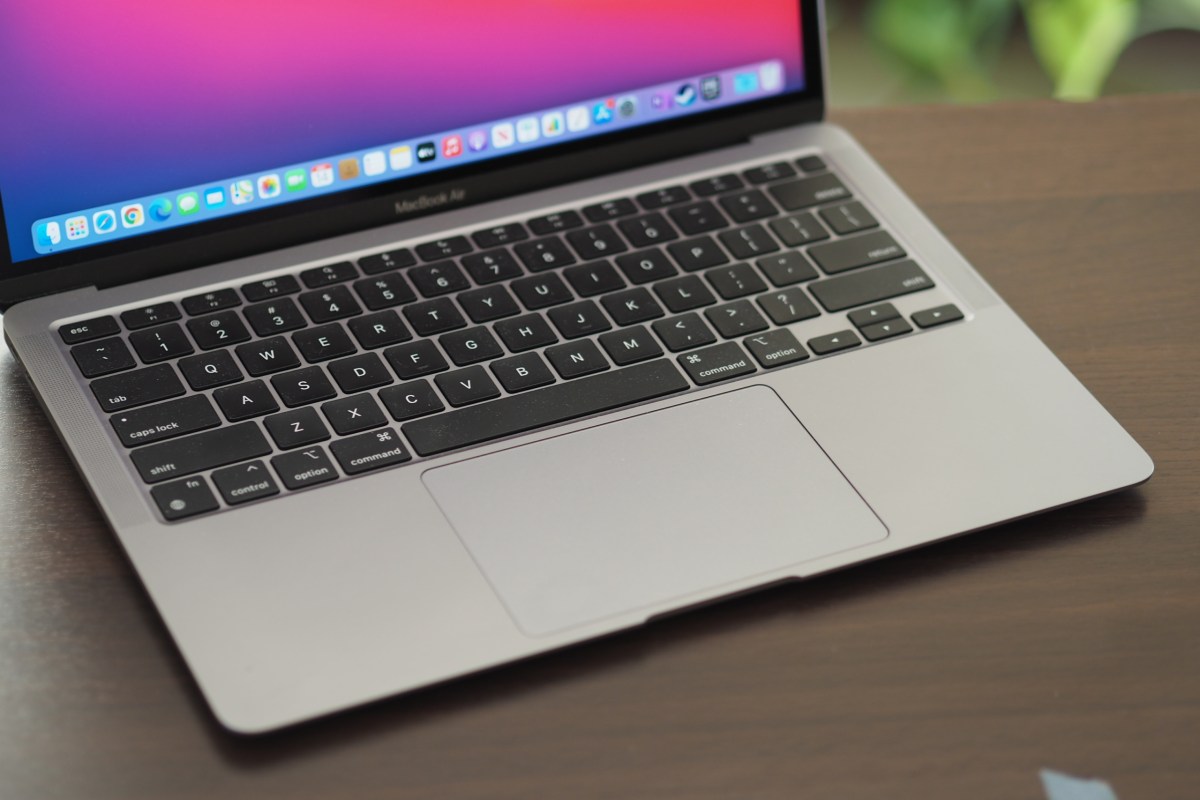
Finally, I mentioned that not all applications run on the MacBook Air M1, although I don’t have many examples to cite. The one that mattered was the software that drives my older colorimeter, which didn’t have the required drivers to run on the MacBook.
But most of the other apps I tried ran, even when in emulation, and were as fast as I’d get on at least a midrange Intel laptop. There were outliers, such as the Epic Games Launcher, which was as sluggish on the MacBook Air M1 as it was on the MacBook Pro 13 M1, but they were few and far between.
Battery life
Performance is only one area where the Apple M1 promises to make serious strides. Battery life is another — after all, this is an ARM chip at heart, and it’s designed to be efficient. Just how efficient can a laptop be when it’s providing the same kind of performance as CPUs that are solely focused on power? Let’s find out.
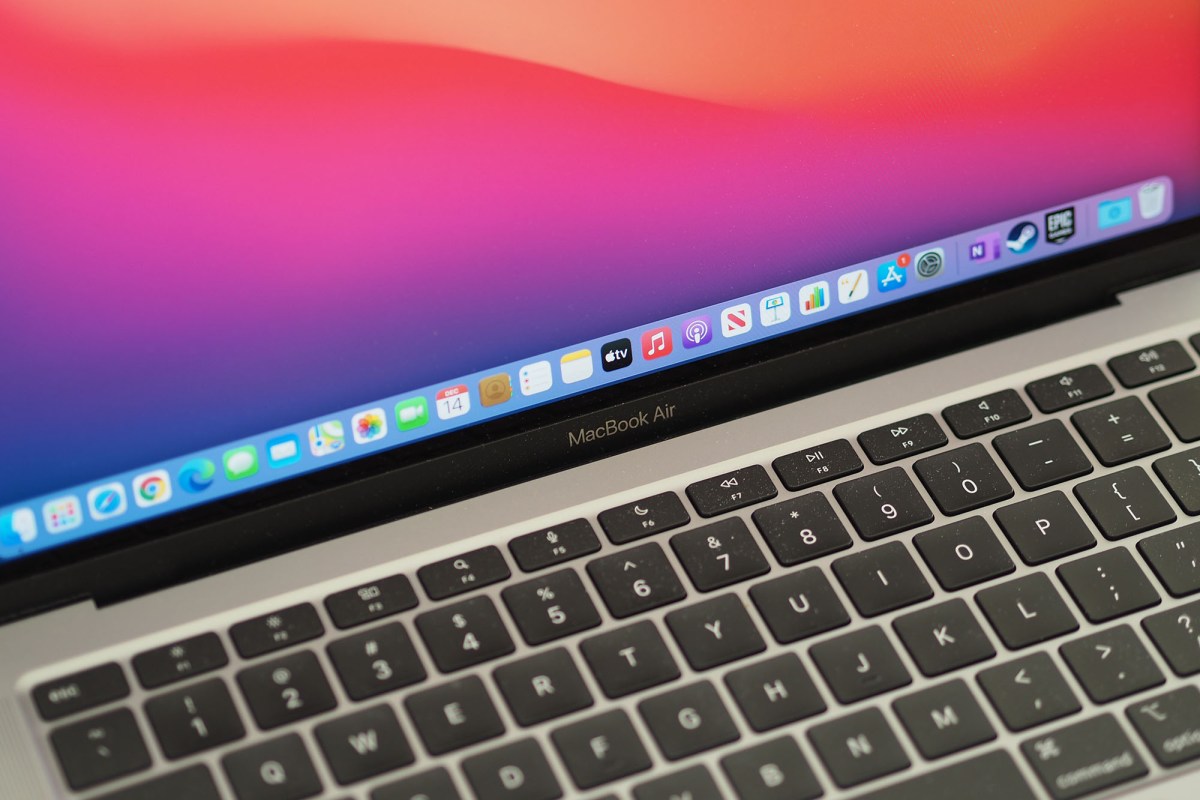
First, I ran our standard web benchmark that runs through a series of popular sites. It’s the benchmark we use to emulate productivity longevity, and it works pretty well. The MacBook Air crushed the test, lasting for 15.5 hours, one of the longest results we’ve seen. The Lenovo Flex 5G with its own ARM processor — the Qualcomm Snapdragon 8cx — lasted about 50 minutes longer, but there’s a catch. The Lenovo was running a Full HD (1,920 x 1,080) display, whereas the MacBook Air M1 features a Retina display with a 2,560 x 1,600 resolution. That’s advantage Apple, big-time — give it a Full HD display (not that you’d want to) and we’d expect a couple more hours out of it.
Next, I ran our video benchmark that loops through a Full HD Avengers trailer until the laptop shuts down. The MacBook Air M1 lasted for 18.5 hours. Again, that’s not as long as some of the longest-lasting laptops we’ve tested, but it’s by far the longest-lasting machine with a high-resolution display. The Lenovo Flex 5G was again stronger here, at almost 28 hours, but again it benefitted from its lower-resolution display.
We normally use the Basemark web benchmark test to see how long a laptop will last with its CPU and GPU under high loads. Unfortunately, I couldn’t get the test to complete on the MacBook Air M1, and so I can’t report on its longevity when you’re pushing it hard. Given the M1’s inherent efficiencies, though, we expect you can get quite a bit of time out of the MacBook Air M1 even when you’re asking a lot from it.
Design
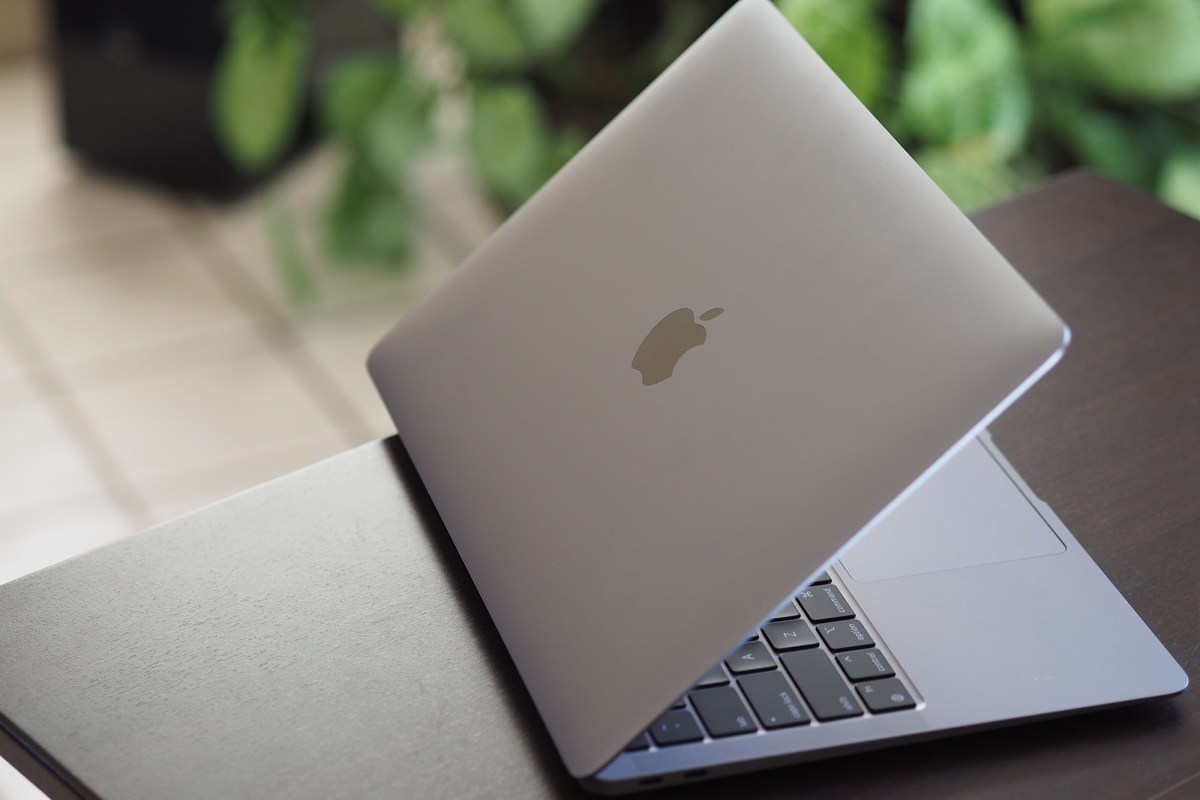
The MacBook Air M1’s design is unchanged from the Intel version. Literally. That means it’s the same wedge of machined aluminum that feels like an alchemical fusion of glass and metal. It’s rock-solid, with no twisting, bending, or flexing anywhere. Apple does some things right, and designing and producing laptops that exude robust elegance is one of them. You can choose from three colors — space gray, gold, and silver — and they all look lovely.
It’s also a very thin and light laptop at 0.6 inches and 2.8 pounds. Windows 10 laptops like the Dell XPS 13 and HP Spectre x360 13 have caught up and are either thinner and lighter or close to it, and so the MacBook Air in general no longer maintains its superiority in this regard. And the MacBook Air M1 is also not as small in its width and depth as some of its 13-inch competitors because it still has the same relatively large bezels to contend with. Add in a display with a 16:10 aspect ratio, and you’ll find that the MacBook Air M1 doesn’t fit into quite the same tiny silhouette as some others.
Really, that’s picking nits, though, because at these sizes, the differences are minuscule. Maybe the MacBook Air M1 would look a little more modern with smaller bezels, but it’s not like you’re going to struggle to find room for it in your backpack.
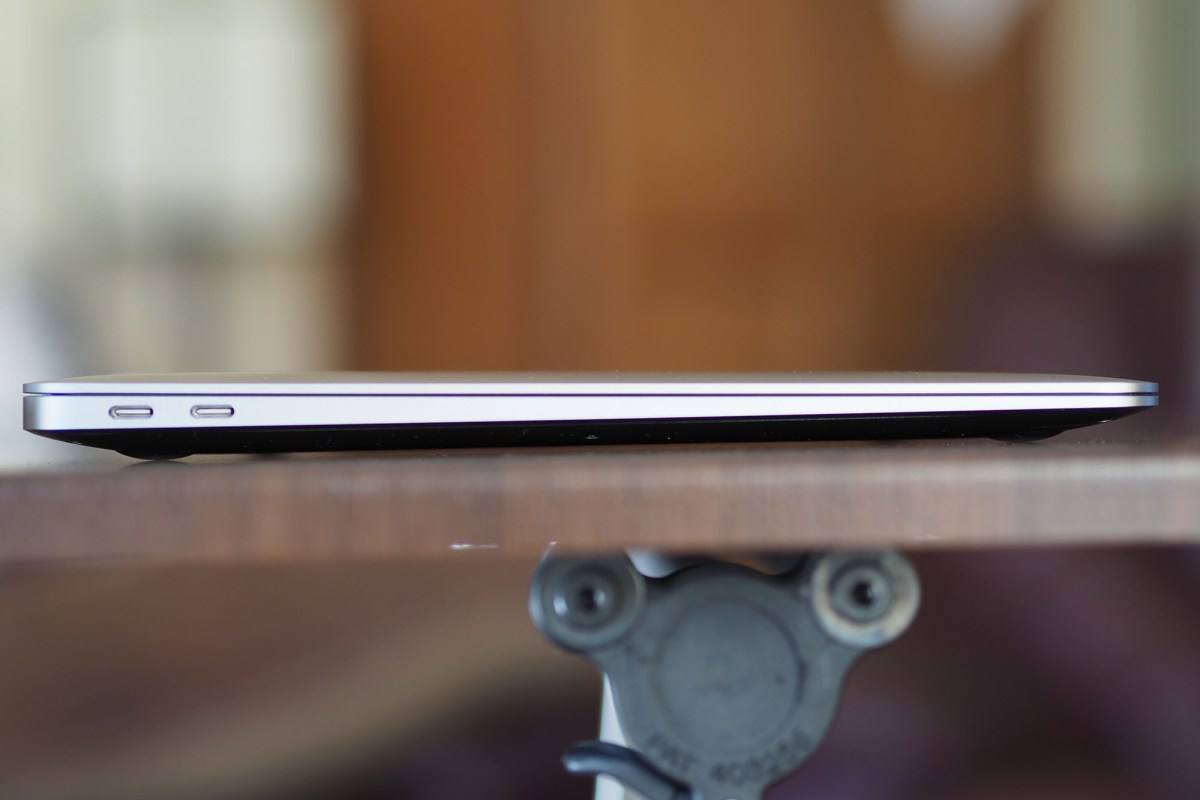
Connectivity remains a weak point with the MacBook Air M1. You get two Thunderbolt 3 ports and a 3.5mm audio jack. That’s it. There’s not even an SD card reader for pulling over your photos and videos. Get ready to buy some dongles, and a Thunderbolt 3 dock would be a good idea, but note that the M1 doesn’t support external GPU enclosures.
The M1 version only supports a single external display, and that’s via either the Thunderbolt 3 ports or a dock. The reasons are deeply technical and based on the M1 architecture, but if you need more than one external display, then the M1 version isn’t for you. Compare this to the typical Windows 10 laptop or Intel-based MacBook, which can support numerous displays of various resolutions. Even laptops in the same $1,000 price range can typically support more than a single external display if they have a Thunderbolt 3 port, multiple USB-C ports, or even an HDMI port (hey, remember those?).
Display and speakers
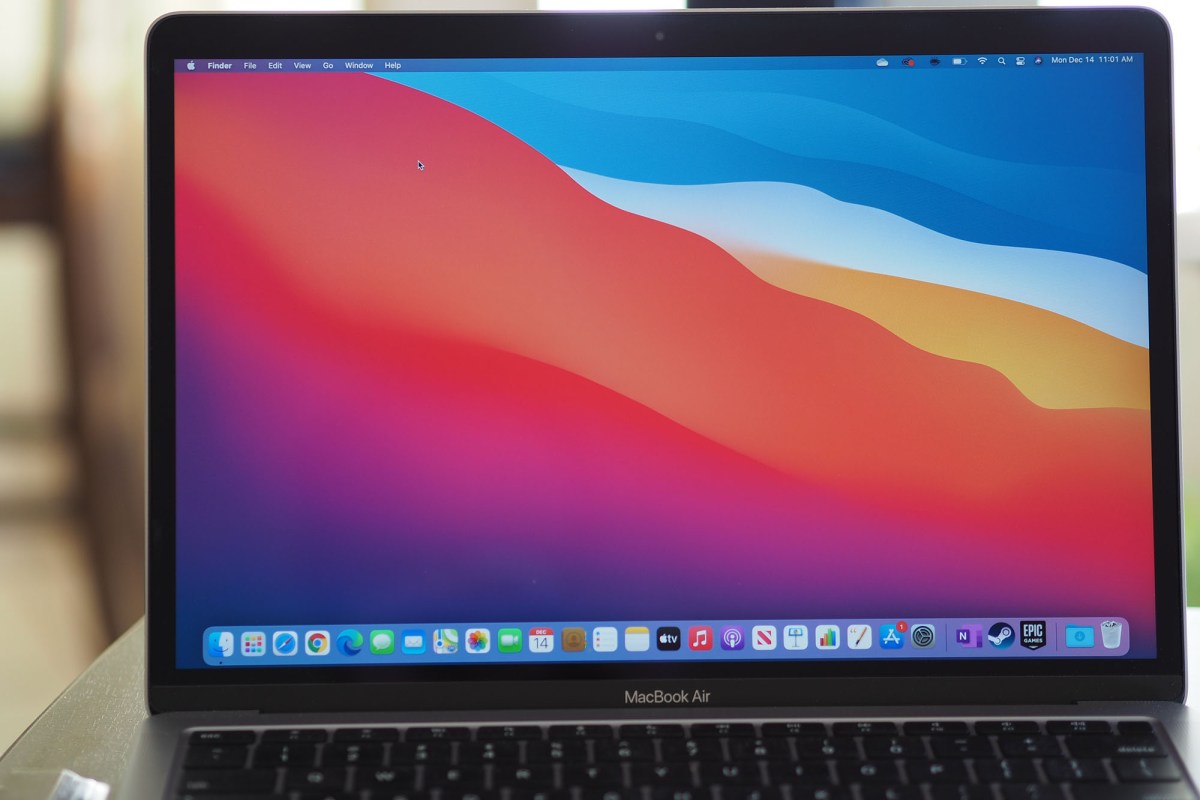
Like the design, Apple kept the same display for the MacBook Air M1. It’s a 2,560 x 1,600 IPS display and it looks marvelous. It’s not in the same class as the MacBook Pro line, but even so, you get good performance that’s enough for all but the most exacting creative professionals.
Brightness came in at 389 nits, sufficient for the average productivity laptop but not up to Apple’s higher-end standards. The color gamut is slightly wider than average, at 100% of sRGB and 79% of AdobeRGB — most premium Windows 10 laptops are around 98% sRGB and 73% AdobeRGB. Those aren’t huge differences, but if you want to get some photo and video editing done, then you’ll appreciate the extra few percentage points. Accuracy is particularly good at 1.39, where 1.0 or less is indistinguishable to the human eye and the standard of excellence, and the contrast ratio is above average at 1130:1 (we like to see at least 1000:1, and so the MacBook Air M1 exceeds our threshold here).
The bottom line is that you’ll love this display and likely won’t have many complaints. If you’re a creative professional and need the widest color gamut, go with the Pro line. You can choose the MacBook Pro 13 M1, get the same performance and close to the same battery life, and enjoy a higher-quality display.

Another area where the MacBook Air M1 can’t quite keep up with its Pro siblings is audio quality. The speakers are quite nice, don’t misunderstand me. They’re clear and bright, with excellent mids and highs and the slightest touch of bass. And there’s zero distortion at maximum volume — the only problem is, that maximum isn’t very loud. So, you’ll do fine listening by yourself, but if you want to share with a crowd, then you’ll want external speakers. And if you want to rock out, prepare to pull out your favorite headphones.
Keyboard and touchpad
The MacBook Air M1 boasts the new Magic Keyboard that Apple created to replace the ill-fated butterfly keyboard on previous models. And it’s one heck of a keyboard, perhaps my favorite of all the laptops I’ve used and the only one that beats out the excellent version that HP puts in its Spectre lineup.
The keycaps are nicely sized, and there’s sufficient travel so you don’t feel like you’re typing on a block of wood (I’m talking to you here, butterfly keyboard). Best of all, the switches are top-notch, with superb precision and a perfect bottoming action that lets you know you’ve struck a key. I can type faster on this keyboard than any other, and I hate giving it up when I switch to any Windows 10 machine.
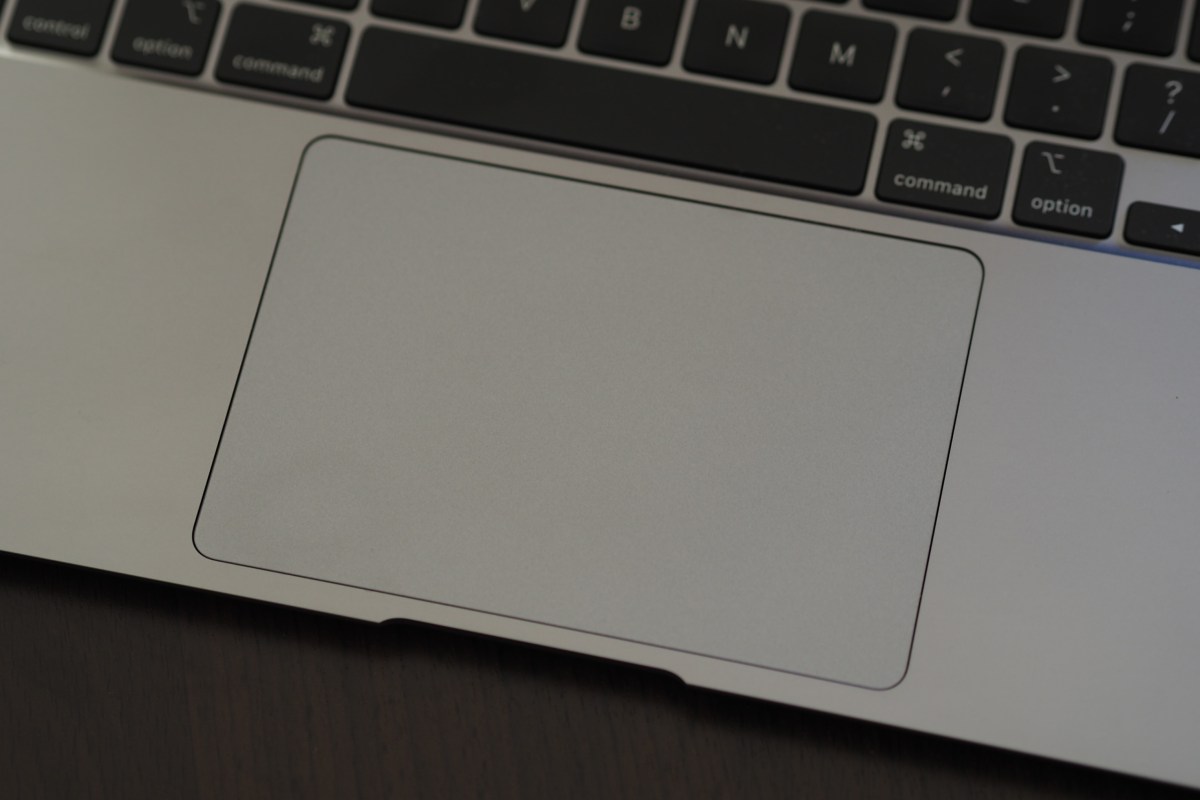
The touchpad is also superior, even given its haptic nature. It’s larger than most touchpads you’ll find on 13-inch laptops, it’s buttery smooth, and once you get used to the haptic aspect, you’ll likely find yourself more in control than with most touchpads. Windows 10 touchpads have gotten so much better over the years, but they still haven’t caught up.
Finally, you’ll use the Touch ID sensor embedded in the power button to login without a password, and it works perfectly. It’s easily the equal of Microsoft’s Windows Hello technology, although you won’t find facial recognition in the MacBook line yet. I missed that as I used the MacBook Air M1, even though in the end, I prefer using a fingerprint reader.
Our take
We said that the Intel MacBook Air 2020 “is a respectable choice for Mac fans on a budget.” I’ll amend that here for the MacBook Air M1: It’s a respectable choice for any MacBook fan who wants a smaller machine that’s perfectly quiet, lasts forever on a charge, and is nearly as fast the MacBook Pro 13 M1. You’re no longer just saving money — you’re getting a laptop that’s going to blow you away with its performance (especially as more apps are made native to the M1) while being extremely thin and light.
There are some limitations, though. You can’t get more than 16GB of RAM (you couldn’t with the Intel version either) and you’re limited to just one external display.
Are there any alternatives?
The same competition that applied to the Intel MacBook Air applies here as well, only you’ll find them to be slower in many cases and they won’t last as long on a charge. The Dell XPS 13 is the obvious choice, which you can get for $980 with a Core i3-1115G4 CPU and the same amount of RAM and storage — but the MacBook Air M1 will blow it out of the water. Go ahead and configure the XPS 13 with its fastest CPU and you’ll still find it slower than the MacBook in many uses.
The HP Spectre x360 13 gives you the option of a better OLED display and the flexibility of a 2-in-1 for a few hundred dollars more depending on the configuration. But again, the MacBook Air M1 is the faster laptop.
Finally, the MacBook Pro 13 M1 is for anyone who wants the fastest M1 machine available (although the difference isn’t nearly as stark as you might imagine). The display will be better and the speakers will blow you away. You’ll also spend at least $300 more.
How long will it last?
The MacBook Air M1 should last you for five years or longer, given how good Apple is about keeping its laptops updated. Certainly, the machine itself will last forever given its build quality, and you’ll love Apple’s support (if not its industry-standard 1-year warranty). And the MacBook Air M1 will just keep getting faster as more software is optimized for the M1 CPU.
Should you buy it?
Yes. The MacBook Air M1 isn’t just for MacBook fans looking for something smaller. It’s for any laptop buyer who’s OK with the switch to Mac OS and wants to join the real future of ARM-based computing.
Editors' Recommendations
- Best Apple deals: Save on AirPods, Apple Watch, iPad, MacBook
- MacBook Pro 16 vs. MacBook Pro 14: The important differences
- Best refurbished MacBook deals: Get a MacBook Air for $140 and more
- Best MacBook deals: Get an Air for $605 and save on M3 MacBook Pro
- The MacBook Air 15 vs. MacBook Pro 14: the easy way to decide



